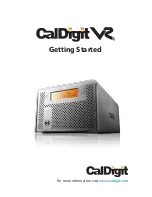
The table below summarizes the important features of the different kinds of RAID supported by the
Smart Array controllers. The decision chart in the following table can help determine which option is
best for different situations.
Table 6 Summary of RAID methods
RAID 0
Striping
(no fault
tolerance)
RAID 1+0
Mirroring
RAID 5
Distributed
Data
Guarding
RAID ADG
Maximum number of
hard drives
N/A
N/A
14
Storage system
dependent
Tolerant of single hard
drive failure?
No
Yes
Yes
Yes
Tolerant of multiple
simultaneous hard drive
failures?
No
If the failed
drives are not
mirrored to each
other
No
Yes (two drives can fail)
Online spares
Further protection against data loss can be achieved by assigning an online spare (or hot spare) to any
con
fi
guration except RAID 0. This hard drive contains no data and is contained within the same storage
subsystem as the other drives in the array. When a hard drive in the array fails, the controller can then
automatically rebuild information that was originally on the failed drive onto the online spare. This quickly
restores the system to full RAID level fault tolerance protection. However, unless RAID Advanced Data
Guarding (ADG) is being used, which can support two drive failures in an array, in the unlikely event that
a third drive in the array should fail while data is being rewritten to the spare, the logical drive still fails.
Logical storage elements
Logical storage elements consist of those components that translate the physical storage elements to
fi
le
system elements. The storage server uses the Window Disk Management utility to manage the various
types of disks presented to the
fi
le system. There are two types of LUN presentation: basic disk and
dynamic disk. Each of these types of disk has special features that enable different types of management.
Logical drives (LUNs)
While an array is a physical grouping of hard drives, a logical drive consists of components that translate
physical storage elements into
fi
le system elements.
It is important to note that a LUN may extend over (span) all physical drives within a storage controller
subsystem, but cannot span multiple storage controller subsystems.
L4
L5
L
3
A1
L1
L2
A2
gl0045
Figure 13 Two arrays (A1, A2) and
fi
ve logical drives (L1 through L5) spread over
fi
ve physical drives
34
Storage management overview
Содержание ProLiant ML310 G3 1TB
Страница 8: ...8 ...
Страница 18: ...18 Data Protection Storage Server ...
Страница 30: ...30 Remote access monitoring and set up completion ...
Страница 48: ...48 Network adapter teaming ...
Страница 60: ...60 Regulatory compliance and safety ...
















































